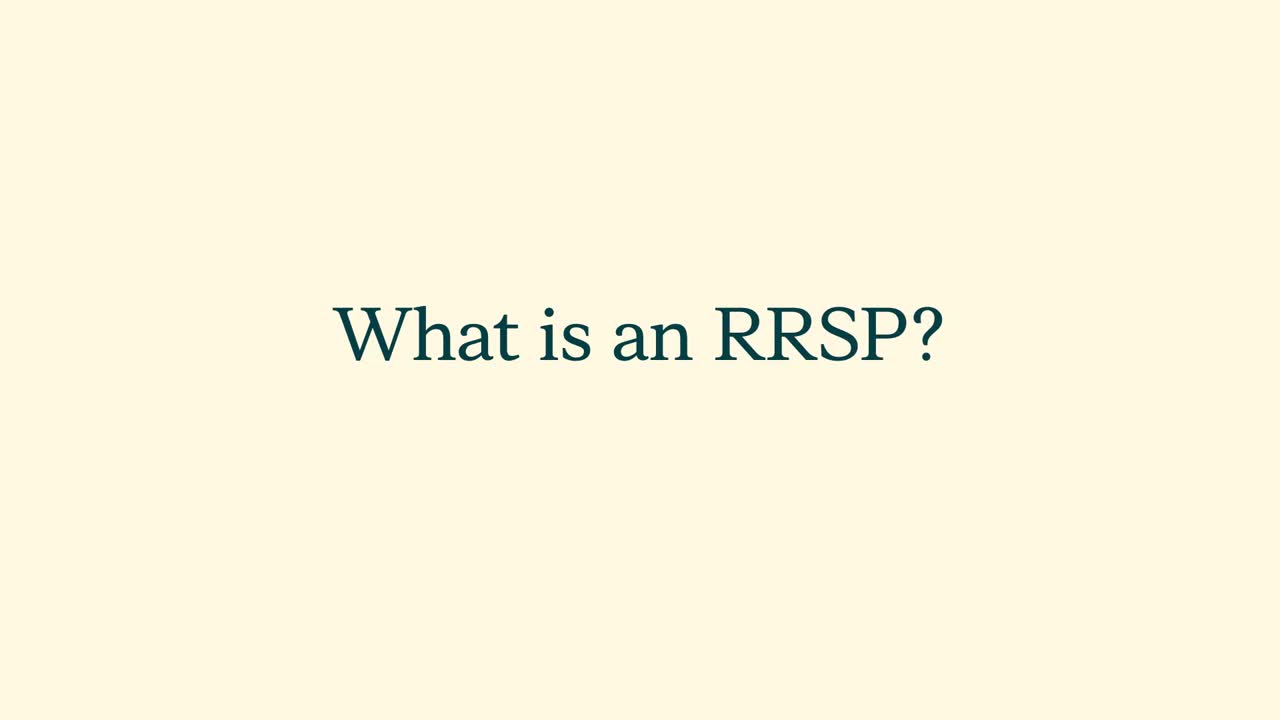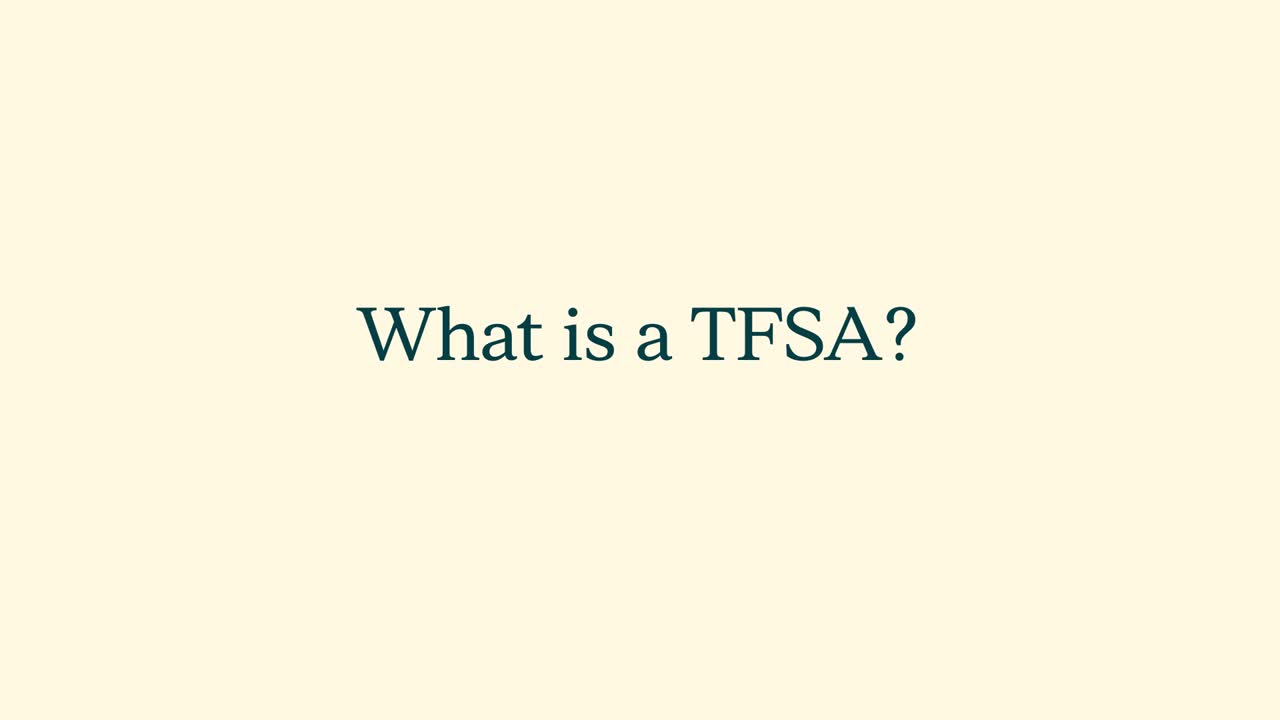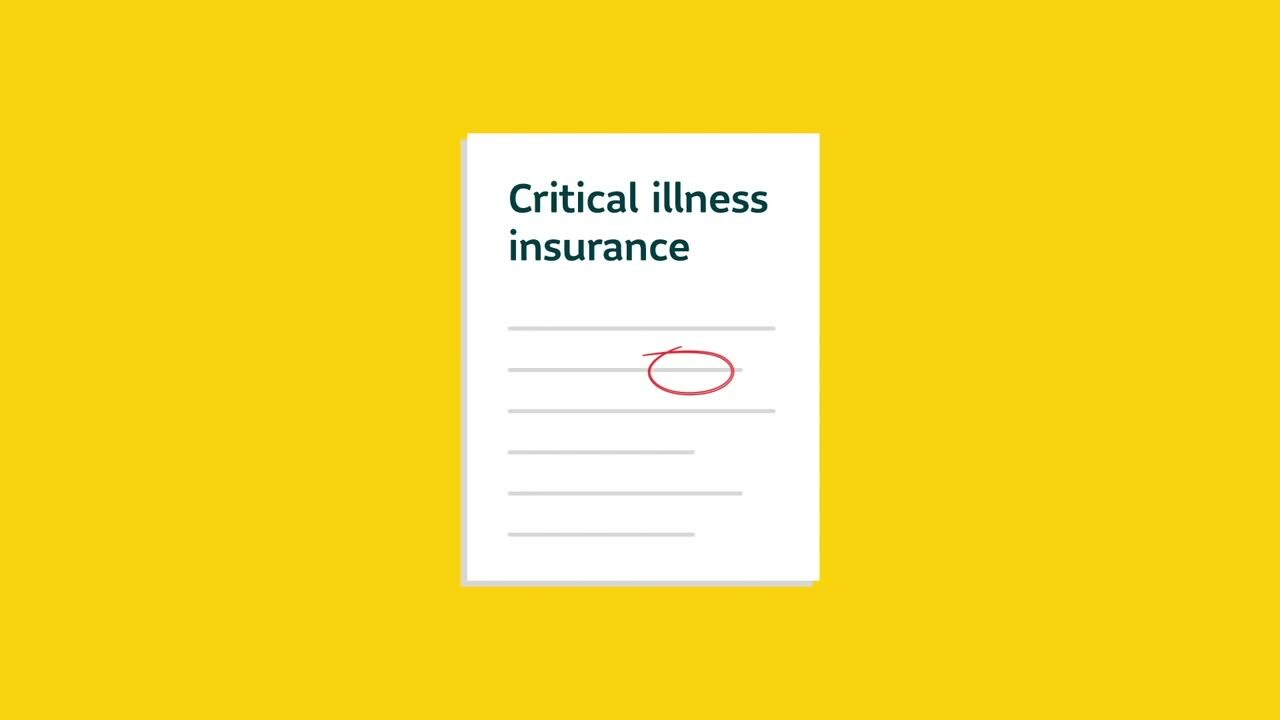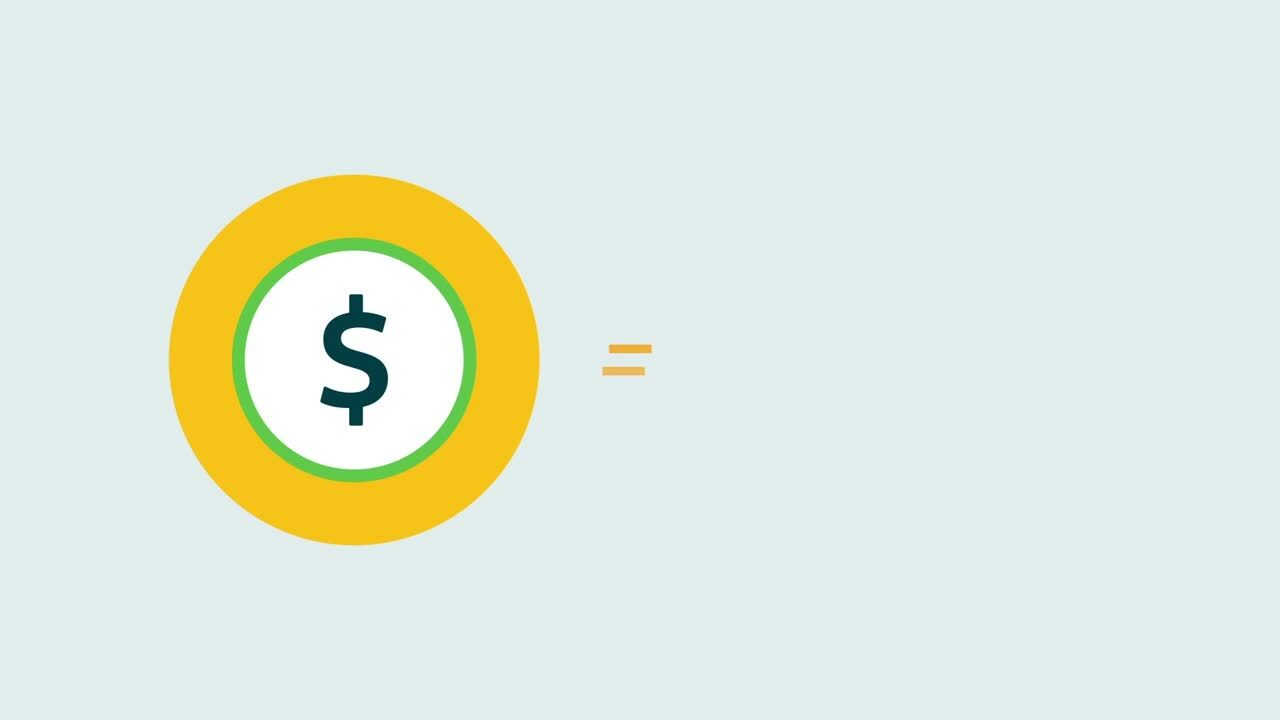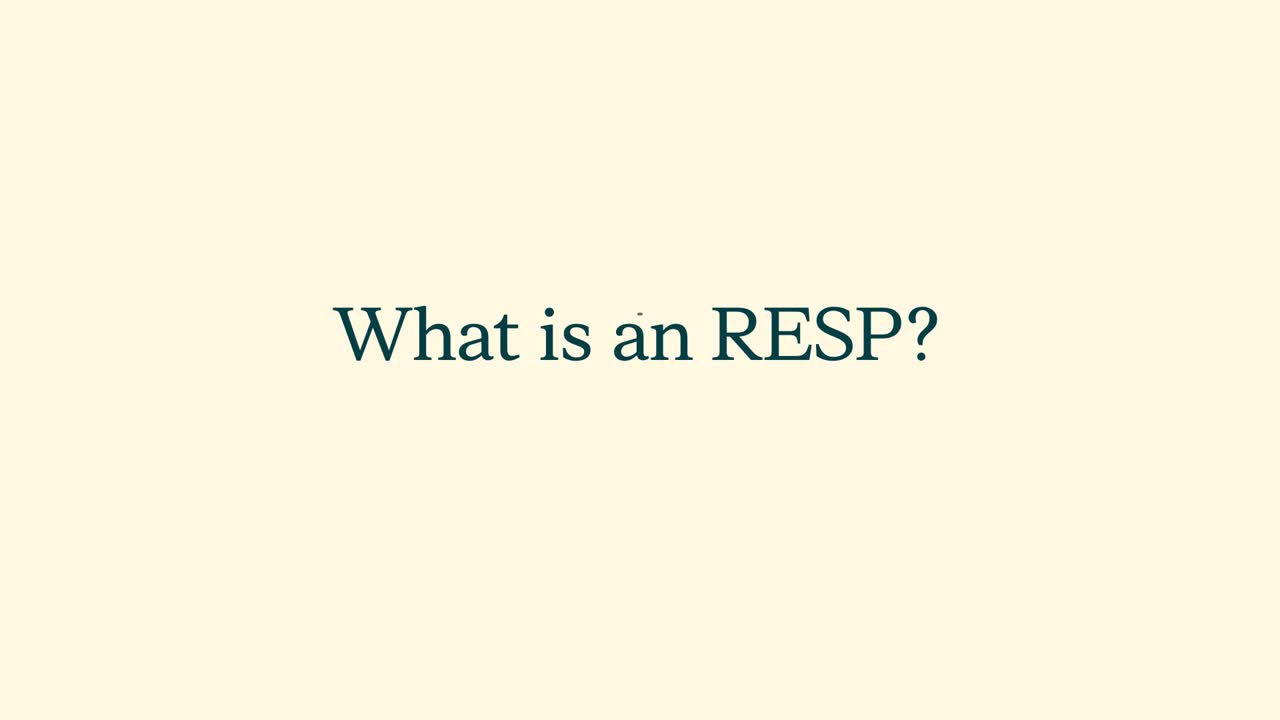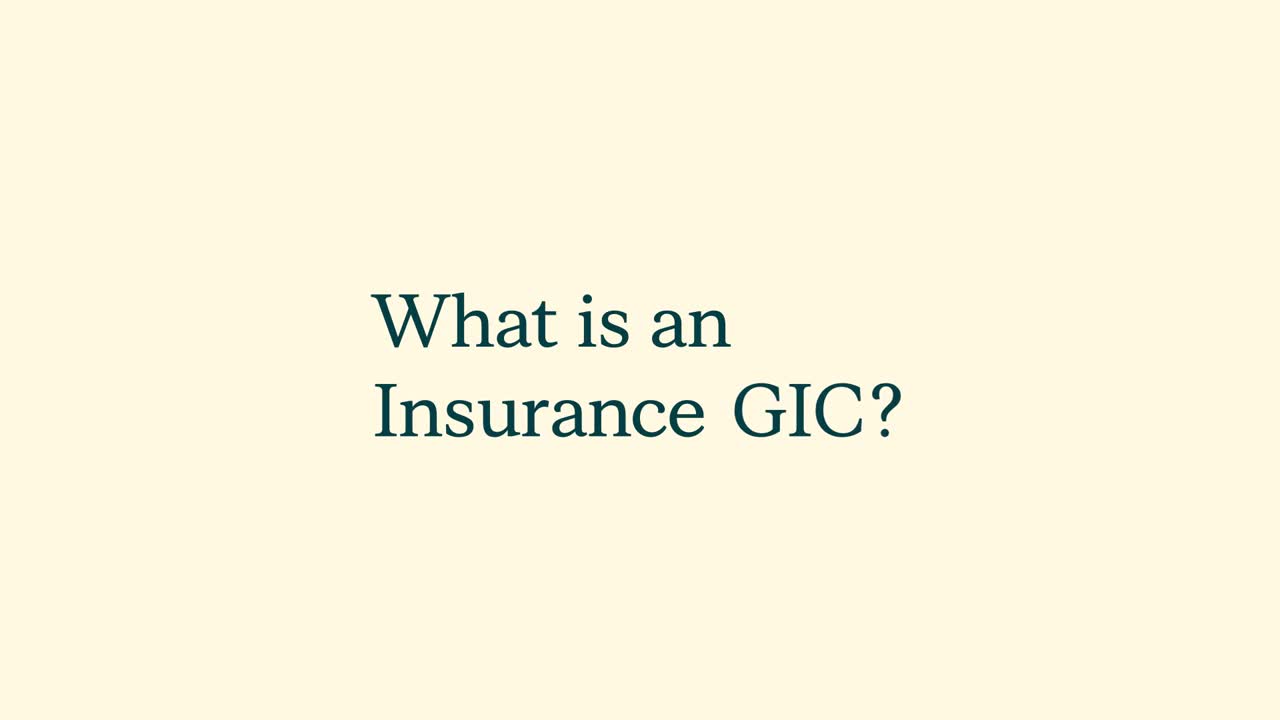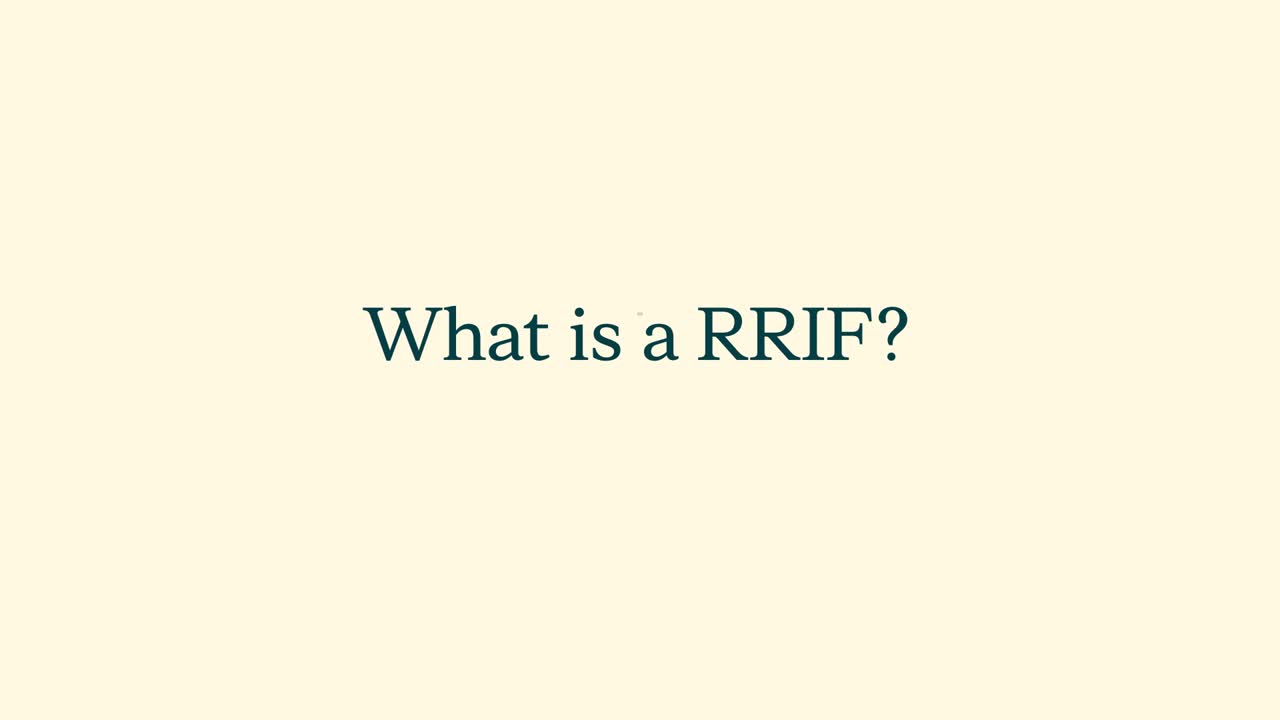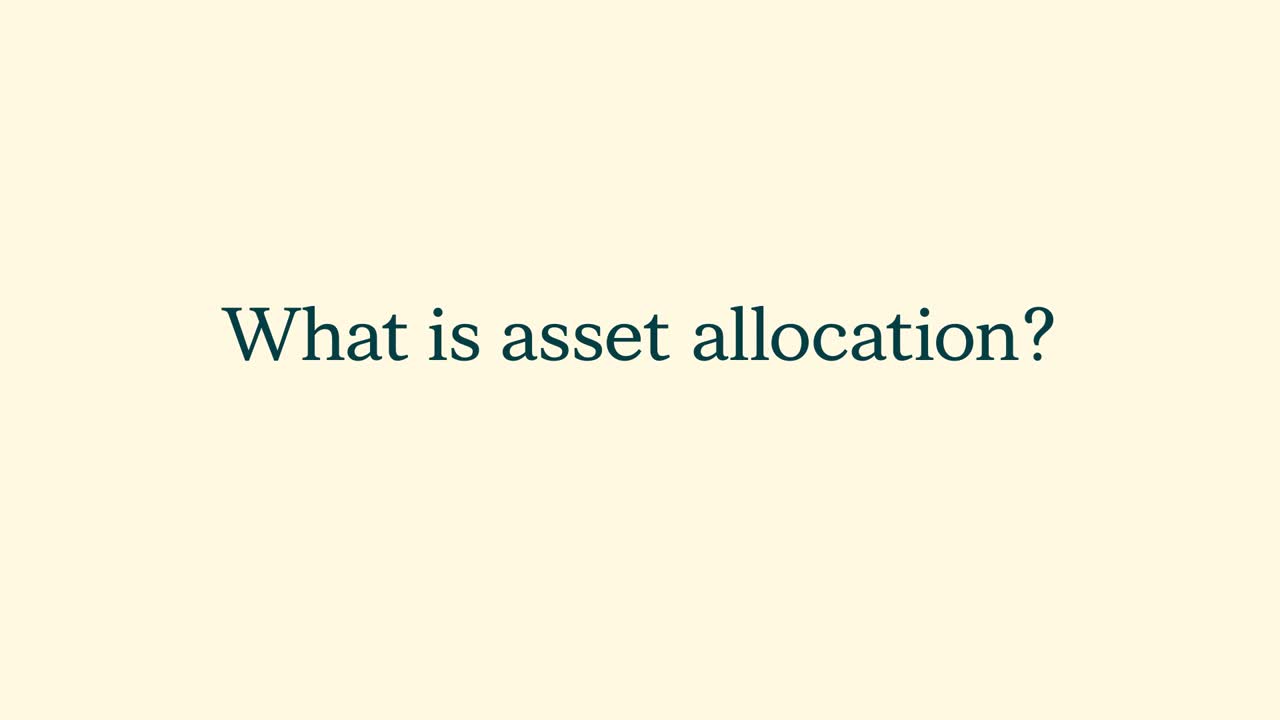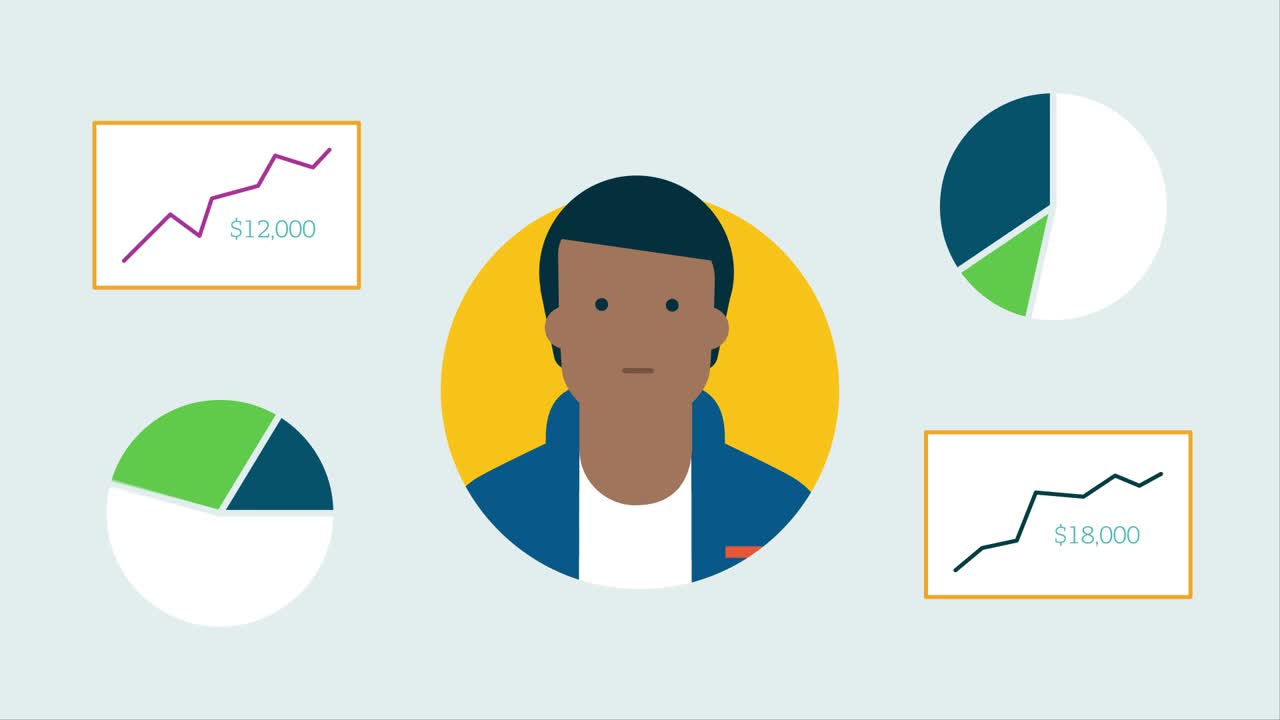Thanks to good nutrition and medical advances, Canadians are living longer than ever before. But will our savings last as long as we do?
14 must-know terms to boost your financial literacy (video)
Watch a series of videos that explains insurance, savings and investment terms – simply.

Did you know that Canada is one of the most financially literate countries in the world?1 However, like all things, there’s still plenty of room for improvement. Especially since the pandemic revealed just how unprepared Canadians were for a financial crisis. In fact, almost half (45%) say the COVID-19 has had some impact on their level of financial stress.2 Maybe a higher financial IQ could have helped lessen the financial impact of the pandemic?
There just may be a brighter side to the pandemic. It's made more young Canadians focus on protecting their financial future.3 And, like most things, the more you know, the better prepared you’ll feel to take the next step. In this case, that step might be toward financial freedom.
Increase your financial literacy in under 30 minutes
In this series of videos, we’ll explain insurance, savings and investment terms – simply. Pick a few topics or watch them all to boost your financial know-how.
- Want to easily binge watch the series? Check out the Simply Put playlist on YouTube.
What is an RRSP? | Watch time: 1min 23 seconds
A registered retirement savings plan (RRSP) is a type of savings account to help you save for retirement. See how it works. Watch now.
What is an RRSP?
Simply put, a Registered Retirement Savings Plan, or RRSP, is a type of savings account that helps Canadians save for their retirement.
How does an RRSP work?
You can hold a variety of investments in your RRSP, like:
- stocks,
- bonds,
- GICs, and
- mutual funds.
Any contributions or growth within your RRSP help you defer taxable income. This means you can defer taxes this year when you contribute, and defer taxes on any investment growth, until you choose to access the funds. For most, withdrawing from your RRSP at a later point in life means paying less tax.
Think of it this way: you’ll probably be in a lower tax bracket when you’re retired in your 60s or 70s. So you’ll be paying less tax when you withdraw from your RRSP at that age.
What’s your RRSP contribution limit?
Your yearly contribution limit is 18% of your earned income, plus unused room from earlier years. Any money you put into an RRSP, up to the limit, reduces your taxable income for that year.
Your RRSP contribution limit is calculated each year and will appear on the Notice of Assessment you receive after filing your taxes.
For more tips and tools, visit sunlife.ca.
What is a TFSA? | Watch time: 1min 36 seconds
A tax-free savings account (TFSA) is a type of savings plan that can help save for just about anything. See how it works. Watch now.
What is a TFSA?
Simply put, a tax-free savings account, or TFSA, is a type of savings account to help save for any need.
How does a TFSA work?
A TFSA doesn’t have to be a savings account at a bank. A TFSA can contain a variety of investments like:
- bonds,
- stocks,
- mutual funds, and
- exchange-traded funds.
Money, or contributions, that you put into a TFSA, are made with after-tax dollars. This means you’ve already paid income tax, and won’t need to pay again when you make withdrawals in the future. Plus, you won’t pay tax on any investment growth in your TFSA.
Whether you’re saving for a dream vacation, your first home, or your retirement, a TFSA can help.
What is your TFSA contribution limit?
A contribution limit is the maximum amount you can add to your TFSA each year. The annual TFSA contribution limit varies from year to year. The federal government determines these limits.
You’re entitled to the lifetime contributions for every year after you turn 18 and are a Canadian resident. For example, let’s say you don’t have a TFSA and were 18 in 2009, when the government introduced the TFSA. In this case, if you were a Canadian resident throughout that entire time, you’d have full contribution room available. But if you became a Canadian resident in 2015, you’d start gaining contribution room then. The best way to find out how much you can contribute to your TFSA is through the Canada Revenue Agency.
Whenever you need it, a TFSA is a smart way to save, and see your savings grow – tax-free.
Find more tips and tools at sunlife.ca.
What is critical illness insurance? | Watch time: 1min 44 seconds
Critical illness insurance gives you money if you become seriously ill. That way, you can focus on your health and not your finances. See how it works. Watch now.
What is critical illness insurance?
Simply put, we’d all like to imagine a future with perfect health. But the right time to plan for the unexpected is when you're healthy. Why? Because once you become ill, your options might be limited.
Critical illness insurance is designed to help you pay costs that may be associated with certain life-altering illnesses.
It provides additional funds if you become seriously ill. This way, you can focus on your health and not your finances.
How does critical illness insurance work?
Let’s say you’re diagnosed with and survive one of the illnesses covered, as defined by your insurance policy. In such a case, you'll receive a one-time, lump-sum cash payment. You can then use that money any way you wish.
Do you need critical illness insurance?
So ask yourself:
- Do your other insurance policies like life, group health, or disability plans offer enough coverage?
- Would your retirement goals still be met if you had to take out, say, $50,000 for expenses related to a medical condition?
- Can you afford to take on the costs associated with being seriously ill? This includes things like:
- loss of income,
- travel to and from treatment, and
- home-care costs.
How can critical illness insurance help you?
It can help with those additional costs that come up.
Chances are you know someone who's been affected by serious health issues. Critical illness insurance will provide you with the peace of mind of knowing you're financially protected in case it happens to you. And, it’ll allow you to focus 100% on your own recovery.
For more tips and tools, visit sunlife.ca.
What is term life insurance? | Watch time: 1min 25 seconds
Term life insurance provides protection for a certain "term" of years. See how it works and why it’s a good way to protect your loved ones from worry. Watch now.
What is term life insurance?
Simply put, all types of life insurance can help provide your loved ones with financial security when you die. One common type of life insurance is called term life insurance.
How does term life insurance work?
Term coverage provides protection for a fixed payment amount, for a given number of years. This could be 10, 15, or 20 or more years. You can choose the amount of time you need.
What happens if you die during this set time period? Then your beneficiaries – the people or person you want to leave money behind to – will get a tax-free death benefit.
The death benefit refers to the amount of money your beneficiary gets when you die. The exact amount they get depends on how much coverage you buy.
Your beneficiaries can then use the money from that benefit for any reason. For example, they can use it to pay:
- Debts,
- the mortgage or rent,
- child-care costs,
- tuition costs,
- funeral costs,
- living expenses,
- and more.
Why choose term life insurance?
Because of its affordability and flexibility, term life insurance can be a good solution to help you manage risk, while providing for your dependents.
But its true value lies in the peace of mind it can offer. The assurance your loved ones can be financially supported at a time when they need it most.
For more tips and tools, visit sunlife.ca.
What is a mutual fund? | Watch time: 2mins 3 seconds
A mutual fund invests in a group of stocks, bonds, or other investments. See how it works. Watch now.
What is a mutual fund?
Simply put, a mutual fund invests in a group of stocks, bonds, or other investments selected by a professional fund manager. The team managing a fund:
- has experience selecting investments, and
- manages buy-and-sell decisions so you don't have to.
How do mutual funds work?
When you buy units of a mutual fund, you're pooling your money with other investors. If you're a small investor, this lets you have a much wider mix of investments than you could on your own.
Why invest in mutual funds?
Mutual funds are simple to buy and often have a low minimum investment. They can give you an easy way to diversify your portfolio. That means including variety – a mixture – in your collection of investments.
What is a diversified portfolio, and why is it important?
A diversified portfolio includes various types of investments, like stocks, bonds and cash. Investments may react differently to the same economic event, for example, higher inflation.
Over time, some investments will increase in value, while others will decrease. So, having a mix of investments can help you minimize risk and potentially achieve better results.
What are the main types of mutual funds?
The three main types of mutual funds are:
- equity funds, that invest primarily in a variety of different kinds of stocks;
- fixed income funds, that invest primarily in bonds; and
- balanced funds, that invest in a mix of stocks, bonds and similar investments.
There are many different categories of mutual funds to choose. Some invest in certain industries, others in certain countries, while still others invest more widely.
Find more tips and tools at sunlife.ca.
What is permanent life insurance? | Watch time: 2mins 10 seconds
Permanent life insurance provides coverage for your entire life and pays your loved ones when you die. See how it works. Watch now.
What is permanent life insurance?
Simply put, all life insurance is designed to provide your loved ones with financial security when you die.
One of the most common types of life insurance is called permanent life insurance. It’s called “permanent,” because it covers you for as long as you live.
How does permanent life insurance work?
It provides coverage for your entire life.
With most permanent plans, your premiums (monthly or annual payments) remain the same, regardless of any changes to your health as you age. And, your beneficiaries will get a tax-free death benefit after you die.
The death benefit refers to the amount of money your beneficiaries get when you die. You can name your family or anyone you want as your beneficiaries.
Beneficiaries are the people or person you want to financially protect. The exact amount of money they get after you die depends on:
- how much life insurance coverage you buy, and
- the type of policy you have.
They can then use that money as they wish. For example, they can use it to cover the cost of:
- debts,
- mortgage or rent,
- child care,
- tuition,
- living essentials, and more.
Most permanent insurance policies also include a feature called cash value.
Cash value is a savings component that can grow over time. You can borrow against it or use it as collateral for a loan. You may also withdraw your cash value, but this may reduce your policy’s death benefit. There can also be tax consequences to accessing your policy cash value.
What’s the advantage of permanent life insurance?
As you age, or if your health deteriorates, purchasing a new insurance plan becomes much more costly. But with most permanent insurance, the premium stays the same for the life of your policy.
Plus, when you buy a permanent life insurance policy, the benefit is guaranteed for the rest of your life.
Permanent life insurance can provide you with the security of knowing your loved ones will have lasting, stable protection. It can offer peace of mind early, leaving you free to enjoy your life now.
For more tips and tools, visit sunlife.ca.
What is an RESP? | Watch time: 1min 32 seconds
An RESP is a type of savings account to help save for a child's education after high school. See how it works. Watch now.
What is an RESP?
Simply put, a Registered Education Savings Plan, or RESP, is a type of savings account designed to help save for a child's education after high school.
People usually set them up for their kids or grandkids.
How much can you contribute to an RESP?
Parents, grandparents, relatives and friends can contribute money any time into an RESP.
There’s no annual contribution limit. But the most you can contribute is $50,000 in total, for each beneficiary.
What can an RESP be used for?
An RESP can help a student pay for a university, college or an apprenticeship.
What are the benefits of an RESP?
- The Canadian government will match 20% of your annual contributions, up to $500 per year, to a lifetime maximum of $7,200. That's free money!
- RESPs are tax-sheltered savings plans. This means that any investments within the plan grow tax-free until they’re withdrawn.
RESPs are tax-sheltered savings plans. This means that any investments within the plan grow tax-free until they’re withdrawn. RESPs combine savings with free money in the form of government grants. That's what makes them such a smart savings opportunity for Canadian families.
For more tips and tools, visit sunlife.ca.
What is an insurance GIC? | Watch time: 2mins 18 seconds
An insurance GIC (or accumulation annuity) is a unique way to save money that's safe and guaranteed. See how it works. Watch now.
What is an insurance GIC?
Simply put, life insurance companies offer a unique way to save money that's safe and guaranteed. It's called an insurance GIC, or an accumulation annuity.
An insurance GIC provides the security of knowing you can protect your savings and guarantee your rate of return, with the additional benefits of an insurance contract.
How does an insurance GIC work?
To start, you choose the amount to invest and how long you want to invest it. Your insurance GIC grows with interest until the end of the term you set, called the maturity date. At the maturity date, you get back your original investment, plus all the accumulated interest.
With an insurance GIC:
- growth is predictable, and
- you don't have to worry about market ups and downs.
What are the benefits of an insurance GIC?
An insurance GIC has many of the same features as a regular GIC. Like a GIC, it provides a guaranteed rate of return over a fixed period. But because it's an insurance contract offered by an insurance company, there are additional benefits.
With an insurance GIC:
- You can name a beneficiary even on non-registered funds. That way, when you die, the money will go directly to your loved ones. This helps avoid potential delays and costs involved in settling an estate.
- Beneficiary names are kept private. Normally, money that flows through a probate estate becomes public record. But, with an insurance GIC, money is paid directly to the beneficiary. This helps families avoid having to make decisions about how the money is divided. Note that probate isn’t required in Quebec.
- Your deposits are protected. Since an insurance GIC is an insurance contract, you’re covered by Assuris, a not-for-profit organization that protects policyholders if their life insurance company fails. You can learn more about Assuris by visiting assuris.ca.
There are many other benefits to insurance GICs. An advisor can show you how an insurance GIC can work for you.
Find more tips and tools at sunlife.ca.
What is long-term care insurance? | Watch time: 2mins 40 seconds
Long-term care insurance provides an income-style benefit when you become dependent. See how it works. Watch now.
What is a payout annuity? | Watch time: 1min 14 seconds
A payout annuity is an easy way to convert savings into regular income payments for life. See how it works. Watch now.
What is a payout annuity?
Simply put, a payout annuity is an easy way to convert some of your savings into regular income payments. A life annuity, a type of payout annuity, can help provide a steady source of income throughout your retirement.
How does a life annuity work?
You buy a life annuity from an insurance company, which calculates your payments based on:
- the amount of savings you’re converting,
- long-term interest rates, and
- the life expectancy of a person your age and gender.
Then, you can enjoy the financial security that comes from knowing you’ll get guaranteed income payments for life.
What other types of payout annuities can you buy?
- Joint life annuities provide payment for as long as either you, or your spouse or common-law partner live.
- Term certain annuities provide a set number of payments.
Is a life annuity right for you?
A life annuity is helpful if you:
- want guaranteed income to pay ongoing fixed expenses in retirement,
- don't want to make any more investment decisions, or
- want to avoid the risk of outliving your money.
Find more tips and tools at sunlife.ca.
What is an employee pension plan? | Watch time: 2mins 40 seconds
If you have an employee pension plan, it’s likely one of two kinds. Find out how they work. Watch now.
What are the two main types of employee pension plans in Canada?
Simply put, if your employer offers a pension plan to help you save for your retirement, it’s likely one of two main types of pension plans:
- A defined benefit pension plan, or
- A defined contribution pension plan.
What is a defined benefit pension plan?
A defined benefit pension plan provides retirement income based on a formula that may include your:
- years of service with your employer,
- salary, and
- age at retirement.
How does a defined benefit pension plan work?
Defined benefit pension plans pool the contributions from both you and your employer in a pension fund. Then, your employer invests the pension fund.
Your employer is responsible for paying your retirement income from the pension fund, based on the plan’s formula.
You’ll receive income each month or year, for the rest of your life. Some defined pension plans are indexed to inflation. That means your income can increase, if the cost of living rises.
What is a defined contribution pension plan?
Defined contribution pension plans provide retirement income, based on the savings you have in the plan. The amount of retirement income you get depends on:
- how much you contribute to the plan,
- how much your employer contributes, and
- how that money grows over time.
How does a defined contribution pension plan work?
There’s no set income level that will be paid. With a defined contribution pension plan, you and your employer pay a defined amount into the plan each year. Companies have mandatory employer contributions, and most have an optional employee component. In most cases, you control how you invest your money. You can usually select investments based on your own risk tolerance and goals. The investment performance determines what your retirement income will be.
What are the benefits of workplace pension plans?
There are many benefits to contributing to your company pension plan:
First, it’s like getting free money. There’s a requirement for employers to contribute to pension plans when they set them up. And, some employers have a matching program. Choosing not to join, or contribute to, your workplace pension plan is like saying no to free money. Remember that in most cases, the money in the pension plan is locked-in for retirement income only.
Second, your contributions are tax-deductible. This means you pay less income tax now. And, contribution and investment earnings are tax-deferred until you withdraw them.
Third, an employee pension plan is a great way to supplement other forms of retirement savings like:
- Canada Pension Plan or Quebec Pension Plan,
- Old Age Security, and
- personal RRSPs and other investments.
Understanding what your pension plan offers can help you make the most of your retirement savings options.
Find more tips and tools at sunlife.ca.
What is a RRIF? | Watch time: 2mins 11 seconds
A registered retirement income fund (RRIF) is a way to convert an RRSP into retirement income. See how it works. Watch now.
What is a RRIF?
Simply put, you can't keep your retirement savings in an RRSP forever. Many people move their savings to a Registered Retirement Income Fund, more commonly known as a RRIF.
What is a RRIF?
A RRIF is one of the ways you can convert an RRSP into an income stream. Then, this income can help support you in your retirement.
A RRIF keeps you in control of how you invest your money. You can choose to invest in:
- Guaranteed investment certificates
- Mutual funds
- Segregated fund contracts
- Other types of investments that align with your risk tolerance and your financial plan.
When do you have to take money out of an RRSP?
By the end of the year you turn 71, you have to decide what to do with your RRSP. But, you don’t necessarily need to withdraw all your savings at once and pay a large tax bill. One choice to consider is converting some or all of your RRSP into an income-producing RRIF. That way, your savings can continue to grow tax-deferred, until you withdraw funds.
How can a RRIF help boost your tax savings?
Tax deferral means you won’t have to pay tax on investments growing in an account until you take money out. The tax deferral you enjoyed with your RRSP continues with your RRIF.
How can you control your funds in retirement?
In many ways, a RRIF works like an RRSP in reverse. Instead of putting money in, you take income out.
You do have to make a minimum withdrawal every year. These withdrawals are subject to tax. There's no limit to how much you can withdraw. You can take as much as you want, when you want.
How can you leave money to your loved ones?
In most cases, you can name your spouse or common-law partner as a beneficiary. Then, your RRIF savings can go to their RRIF or RRSP when you die.
For more tips and tools, visit sunlife.ca.
What is asset allocation? | Watch time: 2mins 24 seconds
Asset allocation is an investment strategy. See how it works. Watch now.
Asset allocation can be an effective way to help manage risk in your investment portfolio.
Simply put, it’s a strategy that involves selecting a mix of investments appropriate to your risk tolerance, time horizon, and financial goals.
What are the most common types of investment assets?
The most common types of investment assets, or asset classes, are:
- cash equivalents,
- fixed income securities, such as bonds or bond funds, and
- equity securities, such as stocks or equity funds.
Each asset class is expected to have different levels of risk and return characteristics. So each will behave differently over time. For example, stocks are typically considered riskier than bonds, but they also offer the potential for higher returns over the long term.
There’s no predicting how well your investments will perform or how steady your returns will be. That’s why it’s important to diversify your portfolio.
What are your asset allocation options by age as an investor?
Are you a young investor saving for retirement? Then you may have plenty of time before you're likely to withdraw the funds. You may consider allocating more of your portfolio to equities. One option would be a split of 70% equities to 30% fixed income.
Are you getting closer to retirement? Then you may want the comfort of a more income-oriented portfolio, with say, maybe only 40% equities and 60% fixed income, even if it means giving up some of the potential for higher growth in exchange for lower, steadier returns.
Diversifying your portfolio over time by increasing the fixed income allocation and decreasing the equity allocation may keep your portfolio stable as you approach goals, such as retirement.
Did you know you can further diversify your portfolio by selecting a mix of securities within each asset class? For example, there are different types of securities according to locations, industry branches, or investment styles.
Because investments within various asset classes may behave differently, it’s a good idea to review and rebalance your portfolio regularly. That will help ensure it holds the right asset mixed, based on your current values, tolerance for risk, time horizon, and financial situation.
Find more tips and tools on sunlife.ca.
Should you consolidate your savings? | Watch time: 1min 58 seconds
See how consolidating your savings can make managing your investments simpler. And, may mean more money in the long run. Watch now.
De-stress by getting professional help with your finances
Did you know that people who don’t work with an advisor are far more likely to say money causes them stress?4 Now’s the time to de-stress.
And after watching these Simply Put videos, you’re likely more prepared to talk to an advisor about insurance, savings and investments. Find your match.
Read more:
This article is meant to only provide general information. Sun Life Assurance Company of Canada does not provide legal, accounting, taxation, or other professional advice. Please seek advice from a qualified professional, including a thorough examination of your specific legal, accounting and tax situation.
1 The Financial Consumer Agency of Canada, Review of Financial Literacy Research in Canada, 2020.
2 FP Canada™ Financial Stress Index, 2021.
3 Sun Life Financial Canada, Ipsos Survey, 2021.
4 FP Canada™ Financial Stress Index, 2021.
